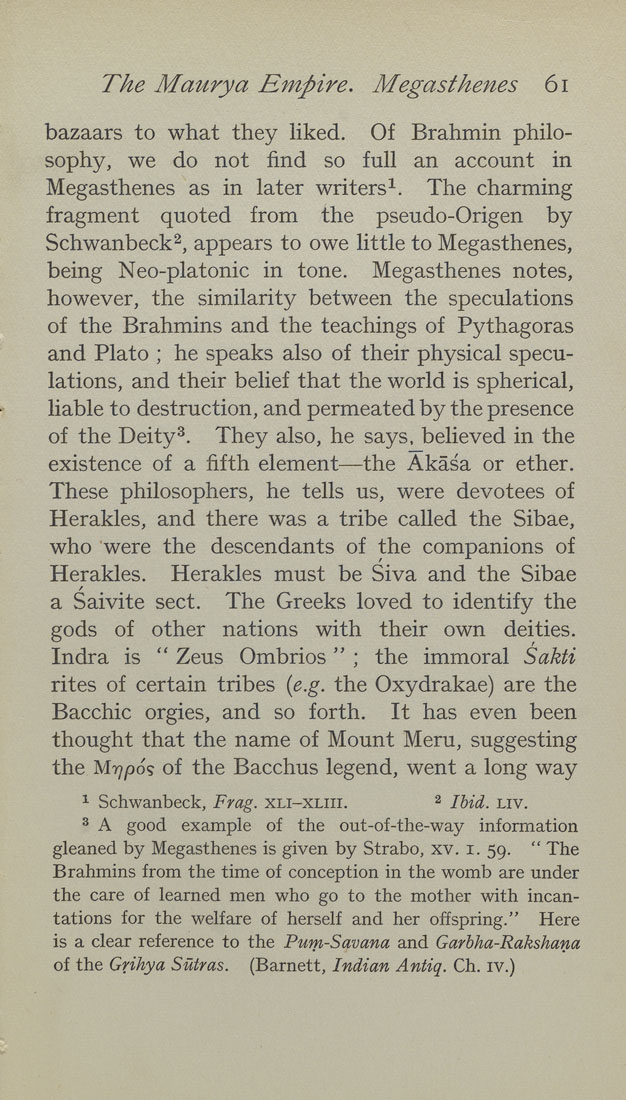The Maurya Einpire. Megasthenes 6i
bazaars to what they liked. Of Brahmin philo¬
sophy, we do not find so full an account in
Megasthenes as in later writers^. The charming
fragment quoted from the pseudo-Origen by
Schwanbeck^, appears to owe little to Megasthenes,
being Neo-platonic in tone. Megasthenes notes,
however, the similarity between the speculations
of the Brahmins and the teachings of Pythagoras
and Plato ; he speaks also of their physical specu¬
lations, and their belief that the world is spherical,
liable to destruction, and permeated by the presence
of the Deity^. They also, he says, believed in the
existence of a fifth element—the Akasa or ether.
These philosophers, he tells us, were devotees of
Herakles, and there was a tribe called the Sibae,
who were the descendants of the companions of
Herakles. Herakles must be Siva and the Sibae
a Saivite sect. The Greeks loved to identify the
gods of other nations with their own deities.
Indra is " Zeus Ombrios " ; the immoral Sakti
rites of certain tribes {e.g. the Oxydrakae) are the
Bacchic orgies, and so forth. It has even been
thought that the name of Mount Meru, suggesting
the Mt^/jo? of the Bacchus legend, went a long way
^ Schwanbeck, Frag, xli-xliii. 2 /5^-^_ liv.
^ A good example of the out-of-the-way information
gleaned by Megasthenes is given by Strabo, xv. i. 59. " The
Brahmins from the time of conception in the womb are under
the care of learned men who go to the mother with incan¬
tations for the welfare of herself and her offspring." Here
is a clear reference to the Pum-Savana and Garbha-Rakshana
of the Grihya Sutras. (Barnett, Indian Antiq. Ch. iv.)
|








